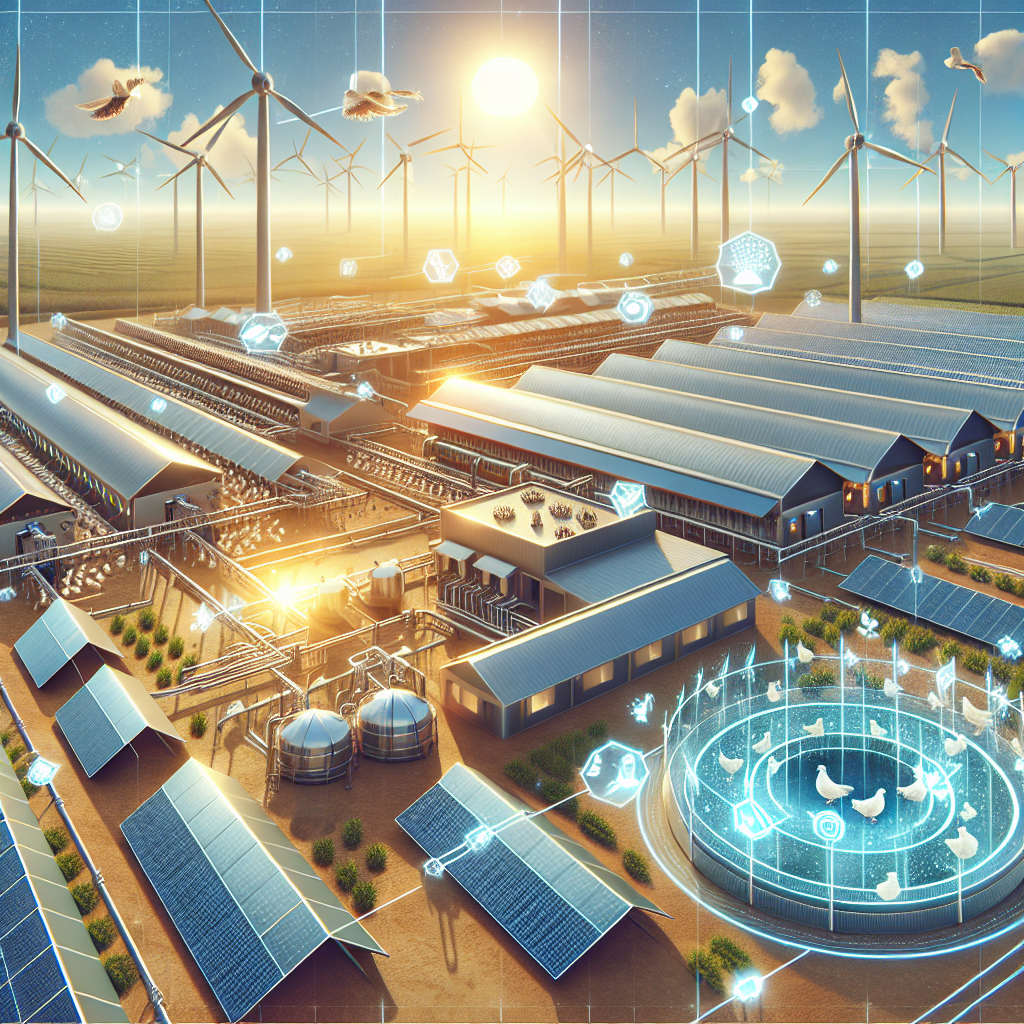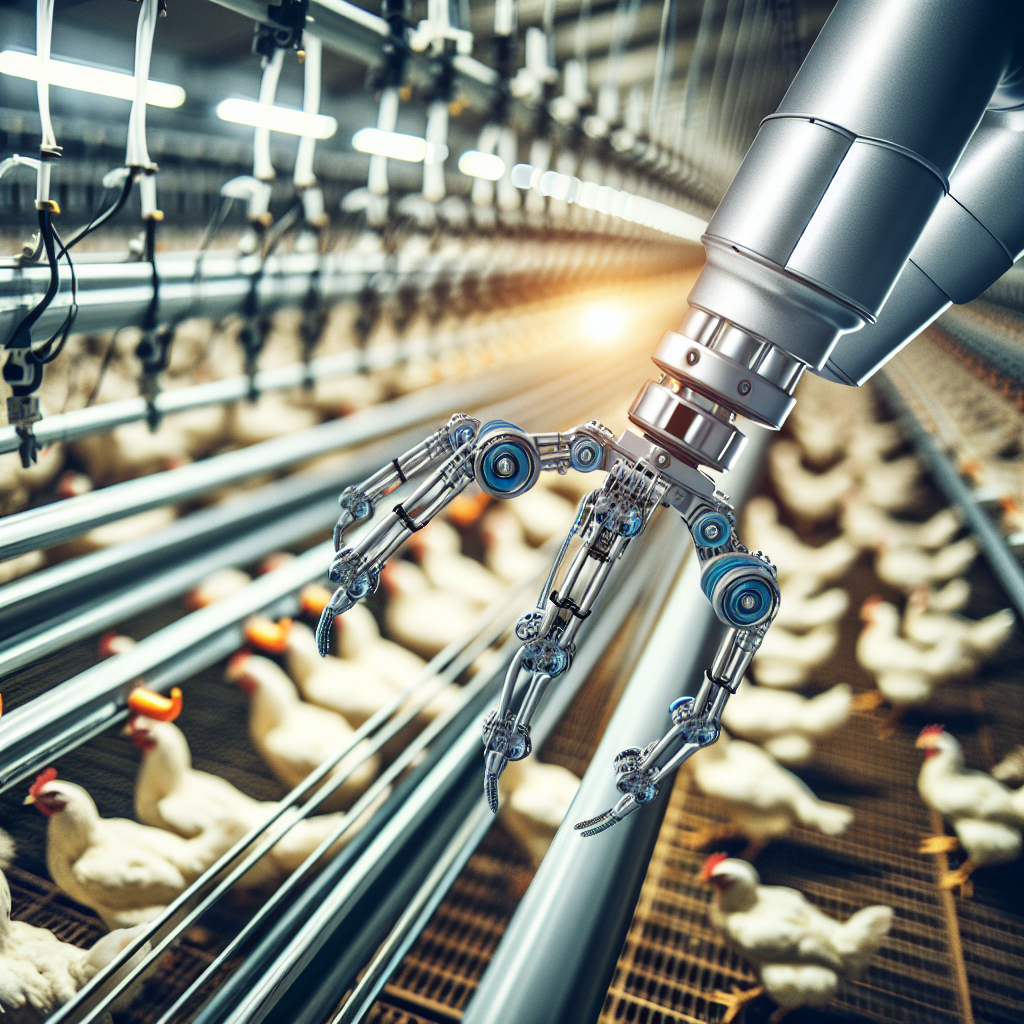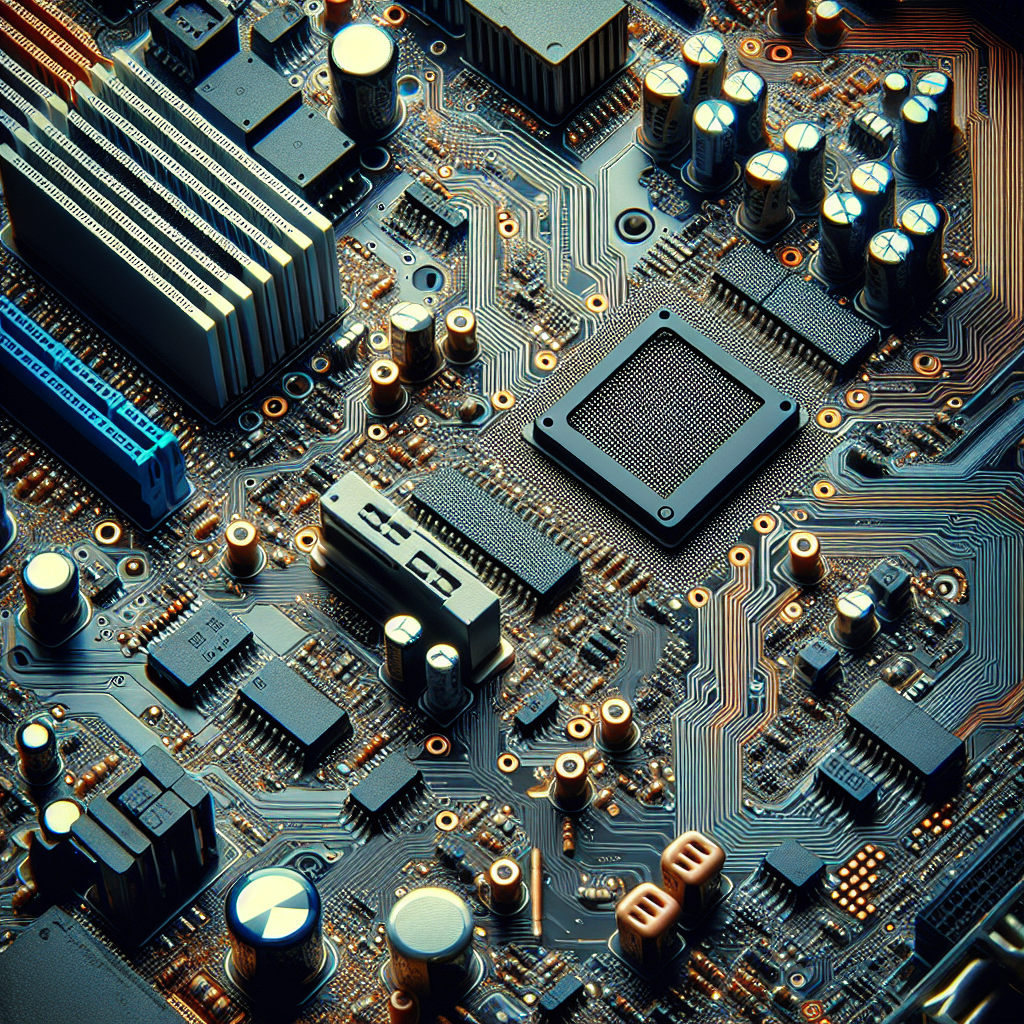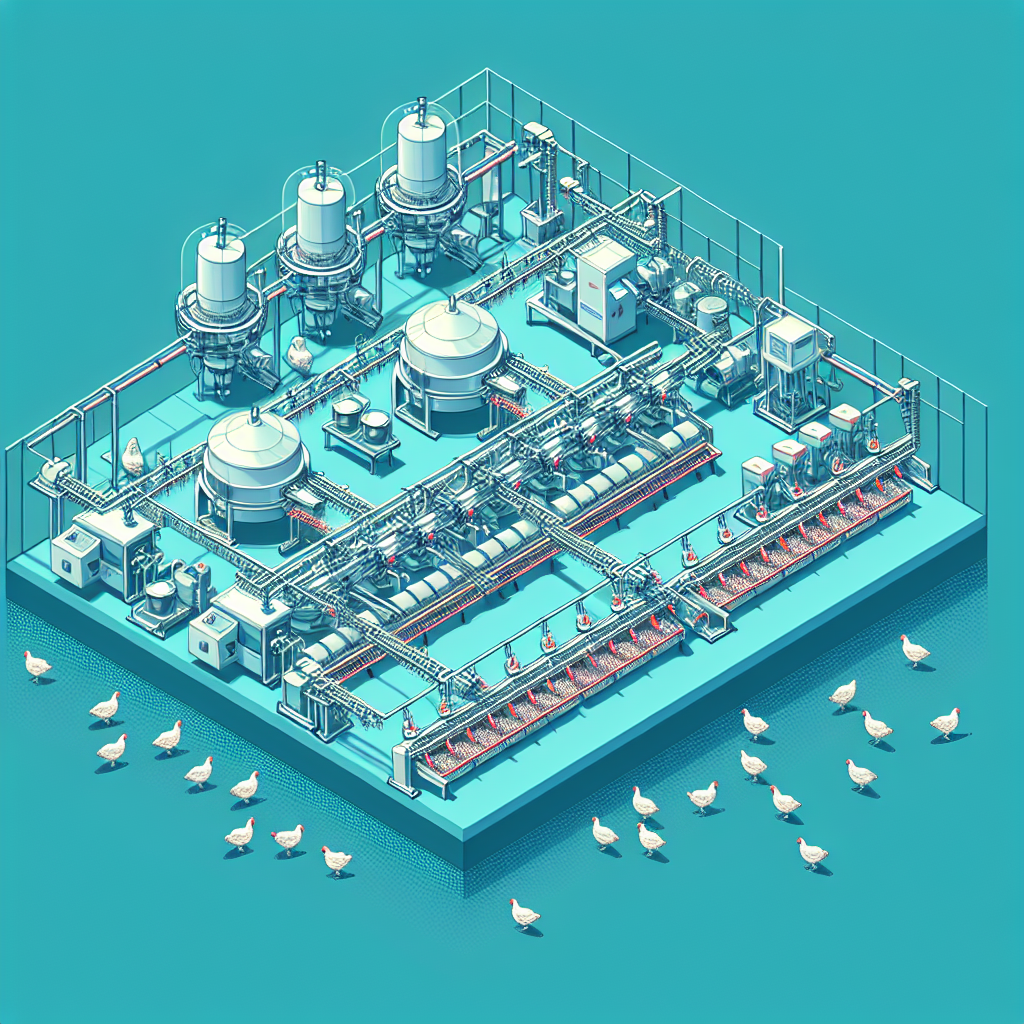Have you ever wondered about the environmental implications of incorporating technology solutions in poultry farming? In today’s world, where technology is continuously advancing and becoming an integral part of our daily lives, it’s important to consider the impact it has on different industries. Poultry farming, in particular, is an industry that heavily relies on various technological advancements to improve efficiency and productivity. However, as with any advancement, there are both pros and cons to incorporating tech solutions in this field. In this article, we will explore the environmental implications of using technology in poultry farming and how it can potentially affect our planet.
Reduced Waste and Pollution
Waste management
Incorporating tech solutions in poultry farming can have a significant impact on waste management. Traditional poultry farming methods often result in a large amount of waste, including manure and feathers. However, with the use of innovative technologies, such as waste processing systems and anaerobic digesters, this waste can be efficiently managed and converted into valuable resources. These technologies help in minimizing waste generation and can even provide renewable energy sources.
Water and air pollution
Poultry farming has the potential to contribute to water and air pollution due to the discharge of untreated wastewater and the release of ammonia and other harmful gases into the atmosphere. By utilizing technology, these environmental implications can be addressed. Advanced water treatment systems can be implemented to ensure that wastewater is properly treated before it is released into water bodies. Additionally, ventilation systems equipped with air scrubbers can help reduce the emission of pollutants into the air, improving air quality in the vicinity of poultry farms.
Chemical usage
The use of pesticides, antibiotics, and other chemicals in traditional poultry farming practices can have detrimental effects on the environment. Incorporating tech solutions can help minimize the reliance on these chemicals. For example, automated monitoring systems can detect early signs of disease or parasites, allowing for targeted treatment instead of blanket use of antibiotics. Furthermore, the use of genetically modified organisms (GMOs) can provide disease-resistant poultry, reducing the need for chemical interventions. Implementing these technologies can greatly reduce chemical usage and its associated environmental impact.
Energy Efficiency
Automation and energy consumption
Tech solutions in poultry farming allow for increased automation, which can contribute to energy efficiency. Automatic feeders, waterers, and lighting systems can be programmed to optimize energy consumption, reducing electricity usage and ultimately lowering the carbon footprint of poultry farms. By using energy-efficient equipment and implementing smart energy management systems, poultry farmers can minimize their reliance on fossil fuels and contribute to a more sustainable energy future.
Renewable energy sources
Integrating renewable energy sources into poultry farming can further enhance energy efficiency and reduce environmental impact. Solar panels and wind turbines can be installed to generate clean, renewable electricity on-site. This enables poultry farms to become more self-sufficient and reduce their dependence on the grid, reducing greenhouse gas emissions and helping to mitigate climate change.
Water Management
Water usage optimization
Poultry farming requires a significant amount of water for various purposes, including drinking water for the birds and sanitation. Incorporating technology can help improve water usage optimization and minimize water waste. Automated monitoring systems can ensure that water is only provided when necessary and in appropriate amounts. Additionally, leak detection systems can help identify and repair any water leaks, preventing unnecessary water usage and conserving this valuable resource.
Water contamination prevention
Contaminated water can have detrimental effects on both the environment and the health of poultry. Tech solutions can help prevent water contamination by providing advanced water treatment systems. These systems can remove impurities, pathogens, and excess nutrients from the water, ensuring that only clean and safe water is provided to the birds. By minimizing the risk of water contamination, poultry farms can protect the surrounding ecosystems and maintain the health and welfare of their livestock.
Land Optimization
Vertical farming
One of the innovative tech solutions in poultry farming is the concept of vertical farming. By utilizing vertical space, poultry farms can maximize land optimization and increase production capacity without expanding horizontally. Vertical farming systems use stacked layers of cages or trays to house the birds, allowing for efficient use of space. This not only reduces the need for additional land but also minimizes the environmental footprint of poultry farming by decreasing deforestation and habitat destruction.
Utilization of marginal lands
Incorporating tech solutions in poultry farming opens up opportunities for utilizing marginal lands that may not be suitable for traditional agricultural practices. These lands, such as desert areas or degraded landscapes, can be transformed into poultry farms using innovative technologies. By utilizing resources like solar power and implementing efficient water management strategies, poultry farming can be successfully established on these marginal lands, reducing the pressure on prime agricultural areas and contributing to sustainable land management practices.
Ecosystem Impact
Habitat destruction
Traditional poultry farming practices, particularly those involving large-scale production, can contribute to habitat destruction. Land clearing for farm expansion and the use of intensive farming methods can result in the destruction of natural habitats and the displacement of native species. However, incorporating tech solutions can help minimize the negative impact on ecosystems. By utilizing land optimization techniques and implementing sustainable farming practices, poultry farms can reduce their environmental footprint and preserve natural habitats for biodiversity conservation.
Biodiversity conservation
Tech solutions in poultry farming can also play a role in biodiversity conservation. For example, by utilizing genetic modification techniques, poultry breeds can be developed that are better suited to their environments and have greater disease resistance. This reduces the need for excessive antibiotic use and minimizes the risk of introducing harmful pathogens into the environment. Additionally, implementing habitat restoration efforts on poultry farms and creating wildlife-friendly areas can provide habitats for native species, contributing to the conservation of biodiversity.
Genetic Modification
GMO poultry and ecological balance
Genetic modification has the potential to revolutionize poultry farming and positively impact the environment. By genetically modifying poultry breeds, scientists can enhance desirable traits such as disease resistance and feed efficiency. This results in healthier and more productive birds, reducing the need for antibiotics and limiting the environmental impact of poultry farming. Moreover, genetic modification can help restore ecological balance by developing breeds that are more suitable to local ecosystems, thereby minimizing the risk of invasive species and promoting biodiversity conservation.
Gene flow and genetic diversity
While genetic modification brings potential benefits, it is essential to consider the implications it may have on gene flow and genetic diversity. Genetic modification should be carefully controlled to prevent the escape of genetically modified organisms into natural populations. Maintaining genetic diversity is crucial for the long-term survival and adaptability of species. By implementing strict containment measures and responsible genetic modification practices, poultry farms can mitigate the potential risks and ensure the preservation of genetic diversity in poultry populations.
Welfare and Animal Ethics
Livestock treatment and stress reduction
Incorporating tech solutions in poultry farming can significantly improve animal welfare and reduce stress levels in birds. Automated systems for feeding and watering ensure a constant supply of food and water, reducing hunger and thirst. Additionally, technology can enable better monitoring of environmental conditions, such as temperature and air quality, ensuring that the birds are kept in comfortable and stress-free environments. By prioritizing animal welfare, poultry farms can create healthier and happier birds, leading to improved quality of meat and eggs while reducing the negative environmental impact of stress-related health issues.
Projecting natural behaviors
Tech solutions can also help in providing an environment that allows poultry to exhibit natural behaviors. For instance, automated systems can mimic natural lighting patterns, promoting regular sleep cycles and reducing stress. Furthermore, the use of innovative housing systems, such as enriched cages or free-range environments, can allow for increased mobility and the expression of natural behaviors, contributing to the overall welfare and ethical treatment of poultry. By creating environments that cater to their natural instincts, poultry farms can improve the overall well-being of the birds while minimizing the environmental impact associated with stress-related health issues.
Data and Monitoring
Precision farming and data analysis
The integration of technology in poultry farming enables precision farming practices and data-driven decision-making. Automated monitoring systems can collect real-time data on various parameters such as feed consumption, weight gain, and environmental conditions. This abundance of data provides valuable insights into the health and performance of the birds, allowing poultry farmers to make informed decisions regarding feed management, disease prevention, and overall farm management. By optimizing resource utilization and reducing waste through data analysis, poultry farms can significantly minimize their environmental impact.
Environmental indicators tracking
Tech solutions can also aid in tracking environmental indicators and monitoring the impact of poultry farming on the surrounding ecosystems. Remote sensing technologies can be used to assess factors such as land use, water quality, and air pollution levels. By continuously monitoring these environmental indicators, poultry farms can proactively identify and address any potential issues, minimizing the negative impact on the environment and ensuring sustainable farming practices. The ability to track and analyze environmental data is essential for the continuous improvement and responsible management of poultry farms.
Socioeconomic Factors
Employment opportunities
The incorporation of tech solutions in poultry farming can create new employment opportunities and contribute to local economies. The implementation and maintenance of advanced technologies require skilled labor, ranging from technicians to data analysts. Additionally, the expansion of poultry farming operations due to increased efficiency and productivity can create jobs in various sectors such as feed production, equipment manufacturing, and transportation. By investing in technology, poultry farms can have a positive impact on local communities through job creation and economic growth.
Economic viability
Tech solutions in poultry farming can enhance the economic viability of the industry. Automation and energy efficiency measures can significantly reduce operational costs, leading to improved profitability for poultry farmers. Furthermore, the adoption of sustainable practices and the utilization of renewable energy sources can reduce dependence on costly external resources and increase long-term economic sustainability. By focusing on economic viability, poultry farms can continue to operate profitably while minimizing their environmental impact.
Regulatory Oversight
Laws and regulations in place
The incorporation of tech solutions in poultry farming is subject to laws and regulations that govern agricultural practices. Governments around the world have implemented various regulations to ensure the responsible and sustainable use of technology in the industry. These regulations cover aspects such as animal welfare, water and air quality standards, genetic modification practices, and waste management. By adhering to these laws and regulations, poultry farms can operate in an environmentally responsible manner and uphold high standards of ethical and sustainable practices.
Government support
Governments play a crucial role in supporting the integration of tech solutions in poultry farming through various means such as research funding, subsidies, and policy incentives. By providing financial and technical support, governments can encourage poultry farmers to adopt innovative technologies that contribute to environmental sustainability. Additionally, governments can facilitate knowledge exchange and collaboration between researchers, policymakers, and industry stakeholders to drive the development and implementation of environmentally friendly practices in poultry farming. Government support is vital in ensuring the successful transition to sustainable and technologically advanced poultry farming practices.
In conclusion, incorporating tech solutions in poultry farming has significant environmental implications. From reducing waste and pollution to improving energy efficiency and water management, technology offers numerous benefits for sustainable and responsible poultry farming. Land optimization techniques and genetic modification can help minimize habitat destruction and promote biodiversity conservation. Additionally, technology plays a crucial role in improving animal welfare and facilitating data-driven decision-making. By considering the socioeconomic factors, regulatory oversight, and government support, poultry farms can successfully leverage technology for a more environmentally friendly and economically viable future.




